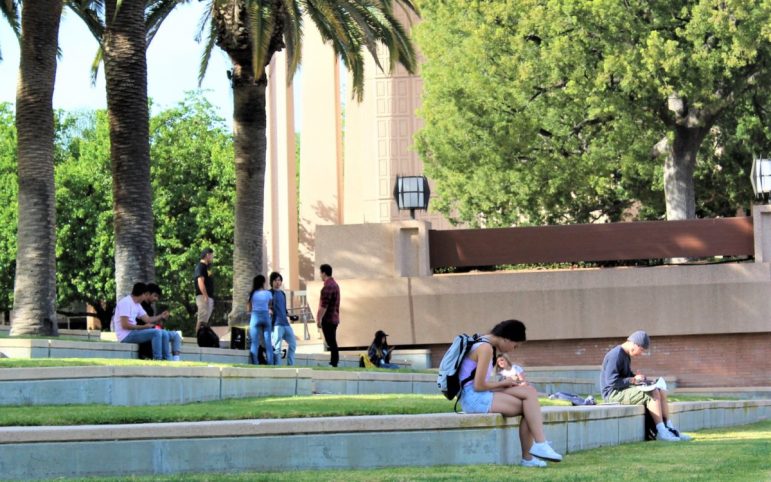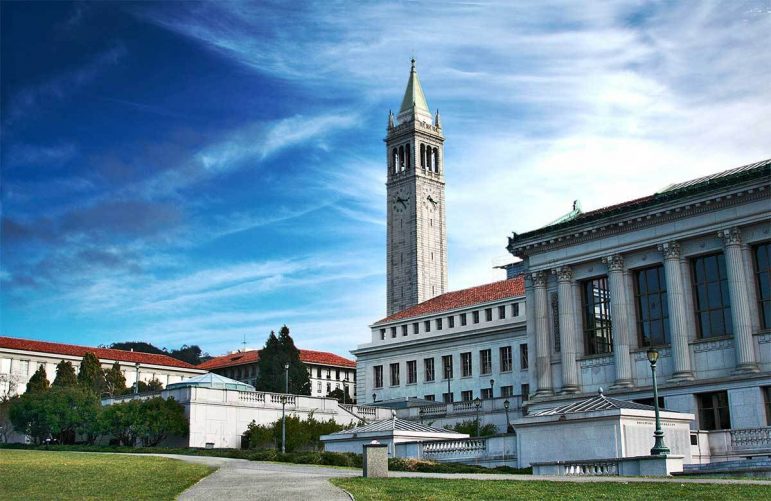In a development that would be no doubt welcomed by many would-be college students and their parents, California should develop a common application form for admission to all levels of public higher education in California, including the state’s community colleges system.

Currently students must apply to each system separately. The proposal is just one of a myriad recommendations issued by a task force convened by Gov. Gavin Newsom’s administration to come up with what it is calls “a roadmap for higher education after the pandemic.”
The common application outlined in the task force’s “Recovery with Equity” report released Tuesday would replace what it called “the currently overwhelming and Byzantine application and transfer processes.” To do so, the task force said, it would require developing an “integrated technology platform” that currently doesn’t exist.
The 20-member panel was convened by Lande Ajose, Newsom’s principal advisor on higher education, in consultation with Newsom’s Council for Post-Secondary Education which he established in 2019. The council is made up of the heads of all public education systems in California, labor leaders and others.
The taskforce detailed a plan that would aid California’s post-pandemic recovery so that by 2030, all of California’s public colleges would be inclusive, offer clear pathways to degrees, offer all public school students early college experiences and access to college preparatory courses, and support students’ basic needs such as internet and financial aid.
The report endorses some long-standing goals such as improving faculty and staff diversity, promoting student well-being, subsidizing internet access for eligible students and improving college affordability. But it also proposes building and expanding systems that would be new for the state:
- Offer an online advising platform that would allow middle, high school, and college learners to access their educational records, enrollment, financial aid, and see their progress to a degree.
- Create an online state social services platform that allows students to apply in one place for anything they are qualified to receive, such as financial aid, CalFresh, housing programs, subsidized childcare, transportation, health and mental care.
- Making A-G coursework, the sequence of courses needed for admission to UC and CSU, as the default high school curriculum and expanding access to early college experiences like dual enrollment which allows students to take college courses in high school.
The goal, Ajose said, was to be thinking about how to emerge from the pandemic “with a vision for economic recovery with a post-secondary ecosystem that is more equitable, more resilient, and more coordinated.” A key part of that vision, Ajose said, is to “elevate the number and diversity of Californians who earn a degree, with a focus on improving outcomes for Black, Latinx, Asian Pacific Islander, Indigenous, and adult learner students who disproportionately have been denied opportunity and access to higher education.”
The task force endorsed the dual admission program proposed by Newsom in his January budget — would allow students admitted to a community college to simultaneously be guaranteed admission to a specific California State University or University of California campus, if they met all the requirements for transfer to a four-year institution.
Crucially, the “streamlined and unified admissions process” the task force has in mind would require creating a single repository for student transcripts from high schools, community colleges, CSU, and UC. Initially, the priority would be on high school and community college transcripts. Such a repository is what planners envisioned for the Cradle to Career Data System which would track a student’s academic and job path from pre-K post college.
In what would also be a significant reform, the task force is recommending that the A-G sequence of courses become the “default high school curriculum” across the state. Currently, most students in California are encouraged to complete those courses, but in most districts, they are required.

The plan advocates for a streamlined and unified admission process, enabled by an online platform, that provides an option for dual admission to guide learners who wish to transfer from a four-year institution from a community college.
The leaders of the state’s public and private colleges and universities applauded the taskforce’s recommendations.
“The Task Force’s forward-thinking recommendations will ensure that the (California State University) prepares future generations of diverse leaders of all backgrounds who will lead and contribute to the Golden State’s recovery as well as its robust growth, benefiting all communities, in the years to come,” CSU Chancellor Joseph I. Castro said.
Community colleges Chancellor Eloy Ortiz Oakley said the taskforce’s recommendations complement the Vision for Success initiative, the system’s blueprint focused on drastically improving success rates of community college students.

State Board of Education president Linda Darling-Hammond endorsed the notion of clarifying and streamlining pathways from preK-12 schools to higher education, including emphasizing what she called Linked Learning pathways to careers and dual credit options that “smooth transitions to our systems of higher education.” Those, she said, “will yield long term benefits to our state.”
In tandem with the growing recognition that students’ non-academic needs have a profound impact on their educational outcomes, the report advocates that students be able to have a single online tool that allows them to apply “all at once for the full spectrum of state services they qualify to receive (e.g., financial aid, CalFresh, housing programs, health/mental healthcare, subsidized childcare, transportation, internet/technology support, etc.).”
As for distance learning — a mode of instruction that almost everyone anticipates will be a central part of a postsecondary landscape — the task force says that California should make sure that students have the necessary internet access and if necessary underwrite the costs of providing it. That could be done by increasing funds for internet access in Cal Grant B financial aid packages, and through partnerships with the private sector.
The task force underscored the crucial importance of getting a college degree for a student’s later success in the labor market. It noted that more than half of California’s labor force with a high school degree or less had filed for unemployment since March 2020. That compared with 13% of workers with a bachelor’s degree or higher who had filed for unemployment. Disturbingly, almost all Black workers with a high school degree or less — 99% — had filed for unemployment in 2020, as well as 75% of the Asian Pacific Islanders. That compared with 52% of white and 33% of the Latino workers with that level of education who filed for unemployment.
